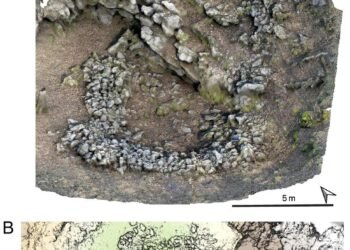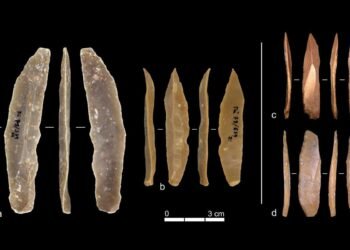Beneath the bustling streets of Paris lies a haunting relic of the past: the Paris catacombs. This subterranean labyrinth stretches over 300 kilometers and houses the remains of more than 6 million people.

Since 2023, a team of scientists has been working to uncover the secrets hidden within these bone-filled tunnels. Led by Philippe Charlier, an anthropologist and archaeologist from Paris-Saclay University, the project is the first-ever scientific study of the catacombs.
The Paris catacombs originated from two major events in the 18th century. The first involved the collapse of underground quarries that had long been mined for the stone used to build the city. These collapses created a hazardous network of voids beneath the streets of Paris, particularly on the city’s left bank. In response, King Louis XVI established the Inspection Générale des Carrières in 1777 to map and stabilize the underground infrastructure.
The second catalyst for the creation of the catacombs was a gruesome public health crisis. In 1780, the Cemetery of the Innocents in the Halles district became so overcrowded that decomposing bodies began to spill into nearby cellars, a horrifying sight for Parisians. With fears of disease spreading, the authorities decided to exhume the bodies from Paris’s overcrowded cemeteries. Between 1785 and 1788, the remains were transported by ox-drawn carts to the abandoned quarry shafts on the outskirts of the city. As Charlier explained to The Guardian, “They were just dropped down the disused quarry shafts and left piled up where they fell.”

In 1810, Louis-Étienne Héricard de Thury, the inspector general of quarries, undertook the task of organizing the catacombs into something more than a haphazard dumping ground. He arranged the bones into decorative walls, known as “hagues,” using long bones such as femurs and skulls to create a more visually structured display. Behind these carefully crafted facades, however, the remaining bones lay in a chaotic heap.
Charlier’s team is not merely interested in the artistic arrangement of the bones. Their research, which began after the collapse of a section of the bone wall in 2022, aims to uncover how these individuals lived and died. By studying skeletal remains, the team hopes to understand how diseases evolved over the centuries and how medical practices, such as amputations and trepanations, were performed. “Our research is looking at 1,000 years of the history of public health in Paris and its suburbs, of the medicine and surgery people underwent and the illnesses they suffered,” Charlier told The Guardian.
One of the key methods being employed is paleopathology, the study of ancient diseases. The team is examining bones for traces of conditions such as rickets, syphilis, and leprosy, which leave identifiable marks on skeletal remains. Additionally, they are extracting DNA from teeth to identify infectious agents, such as the plague, that may not leave visible signs on bones. Charlier’s team is also investigating potential heavy metal poisonings, including from lead, mercury, and arsenic.
Radiocarbon dating, which has not yet been conducted, will provide more precise dating of the remains. Charlier predicts that the number of individuals interred in the catacombs could exceed 6 million. “The task is enormous. It is work without an end. I think the student children of my students will continue this and that is good,” Charlier remarked.
The team’s research, now in its third year, is expected to provide its first preliminary findings by the end of 2024.
























In my next life I want to be an archeologist. Fascinating!